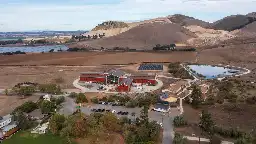Jobs, not jail: A judge was sick of sending kids to prison, so he found a better way
Jobs, not jail: A judge was sick of sending kids to prison, so he found a better way

Jobs, not jail: A judge was sick of sending kids to prison, so he found a better way

Superior Court Judge John Phillips remembers the day 23 years ago like it was yesterday.
A kid stood in his courtroom who’d committed a murder, a young man who was still angry and unrepentant. Then the boy’s grandmother entered.
"He broke down and started crying," said Phillips. "He was just a kid. And I’m thinking, 'I’m sending kids to prison for life.'"
Phillips, now 81, had seen it all in 13 years as a district attorney and then 21 as a judge. Shootings, thefts, assault. He handed out difficult sentences, but he was troubled by the stories of many children who went through his courtroom.
"It's very easy to pull a trigger if you don't have any future, you don't have any goals and you don't have anything to look forward to," he said.
